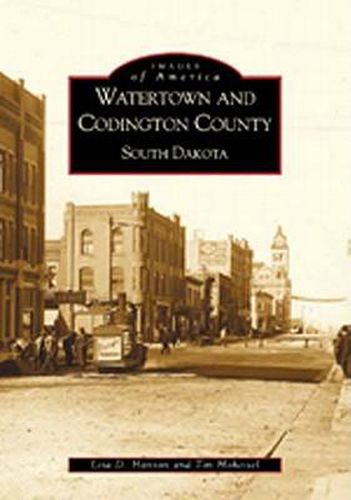Readings Newsletter
Become a Readings Member to make your shopping experience even easier.
Sign in or sign up for free!
You’re not far away from qualifying for FREE standard shipping within Australia
You’ve qualified for FREE standard shipping within Australia
The cart is loading…






The picturesque, gently rolling hills of northeastern South Dakota were formed by glaciers 20,000 years ago. A French cartographer first mapped the area in 1838, calling it Coteau des Prairies,-French for ‘Hills of the Prairies.’ On these hills sits Codington County, which got its name from the Reverend G.S. Codington, a traveling preacher based in Watertown. On August 7, 1878, Kampeska was named the first county seat. At the same time, railroad lines were extended from Minnesota into South Dakota, leading to a great influx of population known as the Great Dakota Boom. The rails only went as far as the Big Sioux River, which was east of Kampeska, so by the end of the year, the entire town up and moved to meet the railroad. With its new location came a new name: Watertown. An influx of German and Norwegian settlers in the early 1900s brought Codington County close to its current population of over 25,000.
$9.00 standard shipping within Australia
FREE standard shipping within Australia for orders over $100.00
Express & International shipping calculated at checkout
The picturesque, gently rolling hills of northeastern South Dakota were formed by glaciers 20,000 years ago. A French cartographer first mapped the area in 1838, calling it Coteau des Prairies,-French for ‘Hills of the Prairies.’ On these hills sits Codington County, which got its name from the Reverend G.S. Codington, a traveling preacher based in Watertown. On August 7, 1878, Kampeska was named the first county seat. At the same time, railroad lines were extended from Minnesota into South Dakota, leading to a great influx of population known as the Great Dakota Boom. The rails only went as far as the Big Sioux River, which was east of Kampeska, so by the end of the year, the entire town up and moved to meet the railroad. With its new location came a new name: Watertown. An influx of German and Norwegian settlers in the early 1900s brought Codington County close to its current population of over 25,000.